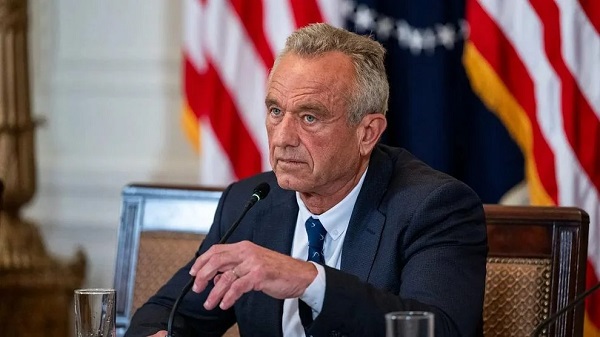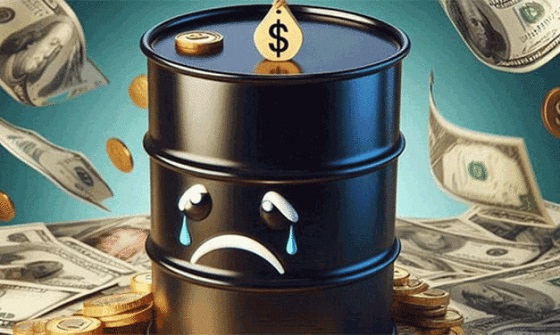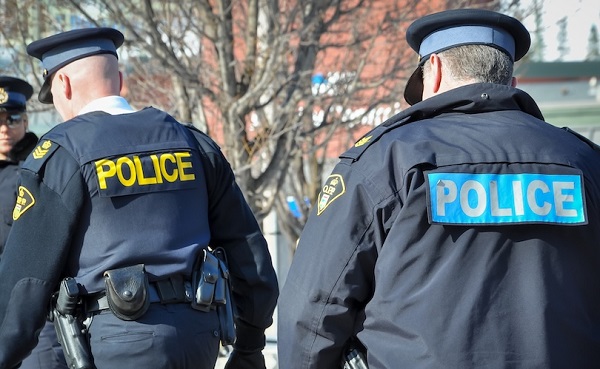Opinion
Progressive hypocrisy laid bare in We Have Never Been Woke

This article supplied by Troy Media.
 By Pat Murphy
By Pat Murphy
Musa Al-Gharbi delivers a sharp, accessible critique of the contradictions within progressive politics
Musa Al-Gharbi is an African-American sociologist and a convert to Islam. His written work has appeared in an array of academic outlets as well as
prestigious mainstream publications such as The Guardian, the New York Times, the Washington Post and the Atlantic. His first book, We Have Never Been Woke (2024), has a simple bottom line. To quote: “… you don’t observe what is important to someone by what they say but rather by what they do, and by how they structure their lives.”
When he cast his first presidential vote in 2004, Al-Gharbi’s worldview was uncomplicated. Social evils were the fault of “those damn Republicans!” Life would be beautiful if everyone could be “more like the enlightened denizens of New York.” While events over the next dozen years moderated that perspective, moving from Arizona in 2016 to embark on a sociology PhD at Columbia caused him to shed whatever vestiges remained.
What he found on New York’s Upper West Side was a progressive bastion with “disposable servants,” an environment given to “casually exploiting
and discarding the vulnerable, desperate and disadvantaged. And it’s largely Democratic voting professionals who take advantage of them—even as they conspicuously lament inequality.”
Two particular events are worth noting. As an elite Ivy League university, Columbia’s student body mostly comes from an affluent, if not downright wealthy, background. Those who don’t are likely to leave with excellent economic prospects.
But that privilege notwithstanding, Donald Trump’s surprise 2016 election victory traumatized many students to the extent that they couldn’t do tests or homework and needed time off. For its part, the university was happy to oblige. Meanwhile, little consideration was given to the support workers—
disproportionately immigrants and minorities—who were purportedly most at risk from Trump’s victory.
Al-Gharbi has this to say: “Although the classrooms were full of tears in the days that followed, one never saw, say, the janitors making a scene, sobbing
uncontrollably about politics as they scrubbed rich kids’ messes out of the toilets. They just showed up to work the next day and did their jobs. The juxtaposition was sobering.”
Another revealing situation transpired during the pandemic when many vacant hotels were being converted into temporary housing in order to relieve the pressure in homeless shelters. In an area that had voted 9 to 1 in favour of Hillary Clinton, Upper West Side liberals successfully lobbied the city to spare their neighbourhoods.
Al-Gharbi is again trenchant: “That is, in order to alleviate risks and inconveniences for themselves, they forced less advantaged people, who were
already bearing the brunt of most other pandemic-related risks and disruptions, to also deal with any challenges related to hosting large numbers of unsheltered individuals in their communities. And they did all this while evoking social justice discourse, often pretending their primary concern was for homeless people themselves.”
Like many commentators, Al-Gharbi notes the increasing attitudinal cleavage between those who work with symbols—words, numbers, ideas and other
abstractions—and those whose work is tied to physical goods and services. In his assessment, the symbolic professions “tend to be especially ideological, conformist, and extreme relative to most other Americans.” For instance, climate activists “are mostly female (61 per cent) and almost entirely white (93 per cent). More than nine out of 10 climate activists have at least a BA, and more than a third possess a terminal degree.”
Generally speaking, the symbolic class is the primary beneficiary of the increasing economic inequality they purport to deplore. Stir in the fact that they have largely captured the Democratic Party and you go some distance towards explaining the gradual migration of working-class voters—and not just white ones—towards the Republicans. The concerns that matter most in daily life are simply different. Accordingly, expectations, or hopes of amelioration, from the political system focus on different things. What’s top of mind for symbolic professionals doesn’t similarly resonate with everyone else.
To be clear, Al-Gharbi doesn’t question progressive sincerity. But he does draw a distinction between sincerity and importance. Believing in principle isn’t the same thing as acting on that principle when your own immediate interests are in play. To give him the last word: “If something is valuable to a person, truly central to their being, they make room for it. They make sacrifices for it.”
Our Verdict: ★★★★☆
A sharp, accessible and often sobering critique of the gap between progressive ideals and actions. Al-Gharbi’s mix of personal insight and data makes the book engaging for general readers and thought-provoking for anyone interested in contemporary politics and culture.
Troy Media empowers Canadian community news outlets by providing independent, insightful analysis and commentary. Our mission is to support local media in helping Canadians stay informed and engaged by delivering reliable content that strengthens community connections and deepens understanding across the country
Alberta
Alberta Next Panel calls for less Ottawa—and it could pay off

From the Fraser Institute
By Tegan Hill
Last Friday, less than a week before Christmas, the Smith government quietly released the final report from its Alberta Next Panel, which assessed Alberta’s role in Canada. Among other things, the panel recommends that the federal government transfer some of its tax revenue to provincial governments so they can assume more control over the delivery of provincial services. Based on Canada’s experience in the 1990s, this plan could deliver real benefits for Albertans and all Canadians.
Federations such as Canada typically work best when governments stick to their constitutional lanes. Indeed, one of the benefits of being a federalist country is that different levels of government assume responsibility for programs they’re best suited to deliver. For example, it’s logical that the federal government handle national defence, while provincial governments are typically best positioned to understand and address the unique health-care and education needs of their citizens.
But there’s currently a mismatch between the share of taxes the provinces collect and the cost of delivering provincial responsibilities (e.g. health care, education, childcare, and social services). As such, Ottawa uses transfers—including the Canada Health Transfer (CHT)—to financially support the provinces in their areas of responsibility. But these funds come with conditions.
Consider health care. To receive CHT payments from Ottawa, provinces must abide by the Canada Health Act, which effectively prevents the provinces from experimenting with new ways of delivering and financing health care—including policies that are successful in other universal health-care countries. Given Canada’s health-care system is one of the developed world’s most expensive universal systems, yet Canadians face some of the longest wait times for physicians and worst access to medical technology (e.g. MRIs) and hospital beds, these restrictions limit badly needed innovation and hurt patients.
To give the provinces more flexibility, the Alberta Next Panel suggests the federal government shift tax points (and transfer GST) to the provinces to better align provincial revenues with provincial responsibilities while eliminating “strings” attached to such federal transfers. In other words, Ottawa would transfer a portion of its tax revenues from the federal income tax and federal sales tax to the provincial government so they have funds to experiment with what works best for their citizens, without conditions on how that money can be used.
According to the Alberta Next Panel poll, at least in Alberta, a majority of citizens support this type of provincial autonomy in delivering provincial programs—and again, it’s paid off before.
In the 1990s, amid a fiscal crisis (greater in scale, but not dissimilar to the one Ottawa faces today), the federal government reduced welfare and social assistance transfers to the provinces while simultaneously removing most of the “strings” attached to these dollars. These reforms allowed the provinces to introduce work incentives, for example, which would have previously triggered a reduction in federal transfers. The change to federal transfers sparked a wave of reforms as the provinces experimented with new ways to improve their welfare programs, and ultimately led to significant innovation that reduced welfare dependency from a high of 3.1 million in 1994 to a low of 1.6 million in 2008, while also reducing government spending on social assistance.
The Smith government’s Alberta Next Panel wants the federal government to transfer some of its tax revenues to the provinces and reduce restrictions on provincial program delivery. As Canada’s experience in the 1990s shows, this could spur real innovation that ultimately improves services for Albertans and all Canadians.
Fraser Institute
Carney government sowing seeds for corruption in Ottawa
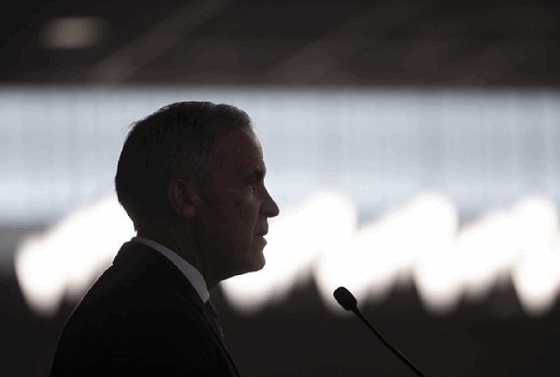
From the Fraser Institute
By Jason Clemens and Niels Veldhuis
A number of pundits and commentators have observed the self-confidence and near-unilateralist approach of our prime minister, Mark Carney. The seemingly boundless self-assurance of the prime minister in his own abilities to do the right thing has produced legislation that sets the foundation for corruption.
Consider the Carney government’s signature legislation, known as the Building Canada Act (Bill C-5), which among other things established the Major Projects Office (MPO). The stated purpose of the MPO and the act is to create a process whereby the government—in practical terms, the prime minister and his cabinet—identify projects in the “national interest” and fast-track their approval by overriding existing laws and regulations.
Put differently, a small group of politicians are now able to circumvent the laws and regulations that apply to every other entrepreneur, businessowner and investor to expedite projects they deem will benefit the country. According to several reports, senators openly referred to the bill as the “trust me” act because it lacked details and guardrails, which meant “trusting” that the prime minister and cabinet would use these new powers reasonably and responsibly.
Rather than fix the actual policies causing problems, which include a litany of laws and regulations from the Trudeau era such as Bill C-69 (which added vague criteria to the approval process for large infrastructure projects including pipelines) and Bill C-48 (which bans oil tankers from docking in British Columbia ports), the Carney government chose to create a new bureaucracy and political process to get around these rules.
And that’s the problem. By granting itself power to get around rules that everyone else has to play by, the government created the opportunity for corruption. Entrepreneurs, businessowners and investors interested in infrastructure projects, particularly energy projects, now need to consider how to convince a handful of politicians of the merits of their project. This lays the groundwork for potentially corrosive and damaging corruption now and into the future. While this prime minister may have an infinite amount of confidence in his abilities to do the right thing, what about the next prime minister, or the next one? These rules will outlive Prime Minister Carney and his government.
And it’s not just the Carney government’s signature Build Canada Act. The more recent Bill C-15, which implements certain aspects of the federal budget, contains provisions similar to the Build Canada Act that would also allow cabinet ministers to circumvent existing laws and regulations. A number of commentators have raised red flags about how the legislation would empower any minister to exempt any entity (i.e. person or firm) from any law or regulation—except the Criminal Code—under the minister’s responsibility for up to six years in order to foster innovation. The underlying rationale is that we have laws and regulations on the books that impede experimentation and innovation.
Again, rather than undertake the difficult work of updating and modernizing existing laws and regulations to empower entrepreneurs, businessowners, workers, and investors, and ensure they all play by the same rules, the Carney government instead wants to create a new mechanism for a select few to be able to sidestep existing laws and regulations.
A different way to think about both legislative initiatives is that the prime minister and his ministers are now able to provide specific companies with enormous advantages over their competitors through the political system. Those advantages have enormous value, and that value creates the opportunity for corruption now and in the future.
The Carney government recognizes that our regulatory system is badly broken, otherwise it wouldn’t create these work-around laws. It should do the hard work, which it was elected to do, and actually fix the laws and regulations that impede economic development and progress for all entrepreneurs, businessowners and investors. Otherwise, we risk a future littered with stories of advantage and corruption for political insiders.
-

 Alberta2 days ago
Alberta2 days agoOttawa-Alberta agreement may produce oligopoly in the oilsands
-

 Business2 days ago
Business2 days agoSome Of The Wackiest Things Featured In Rand Paul’s New Report Alleging $1,639,135,969,608 In Gov’t Waste
-

 Energy2 days ago
Energy2 days ago‘The electric story is over’
-

 Energy2 days ago
Energy2 days agoWestern Canada’s supply chain for Santa Claus
-
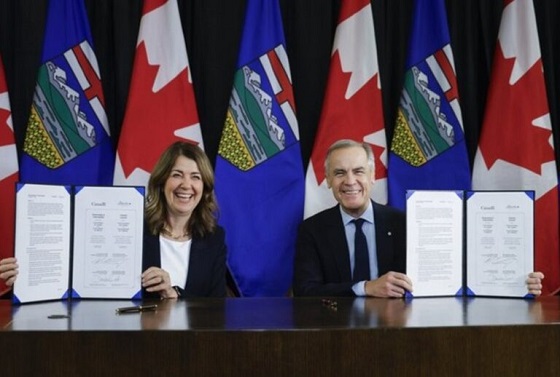
 Energy2 days ago
Energy2 days agoThe Top News Stories That Shaped Canadian Energy in 2025 and Will Continue to Shape Canadian Energy in 2026
-

 International2 days ago
International2 days ago$2.6 million raised for man who wrestled shotgun from Bondi Beach terrorist
-

 armed forces16 hours ago
armed forces16 hours agoRemembering Afghanistan and the sacrifices of our military families
-

 Fraser Institute16 hours ago
Fraser Institute16 hours agoHow to talk about housing at the holiday dinner table







